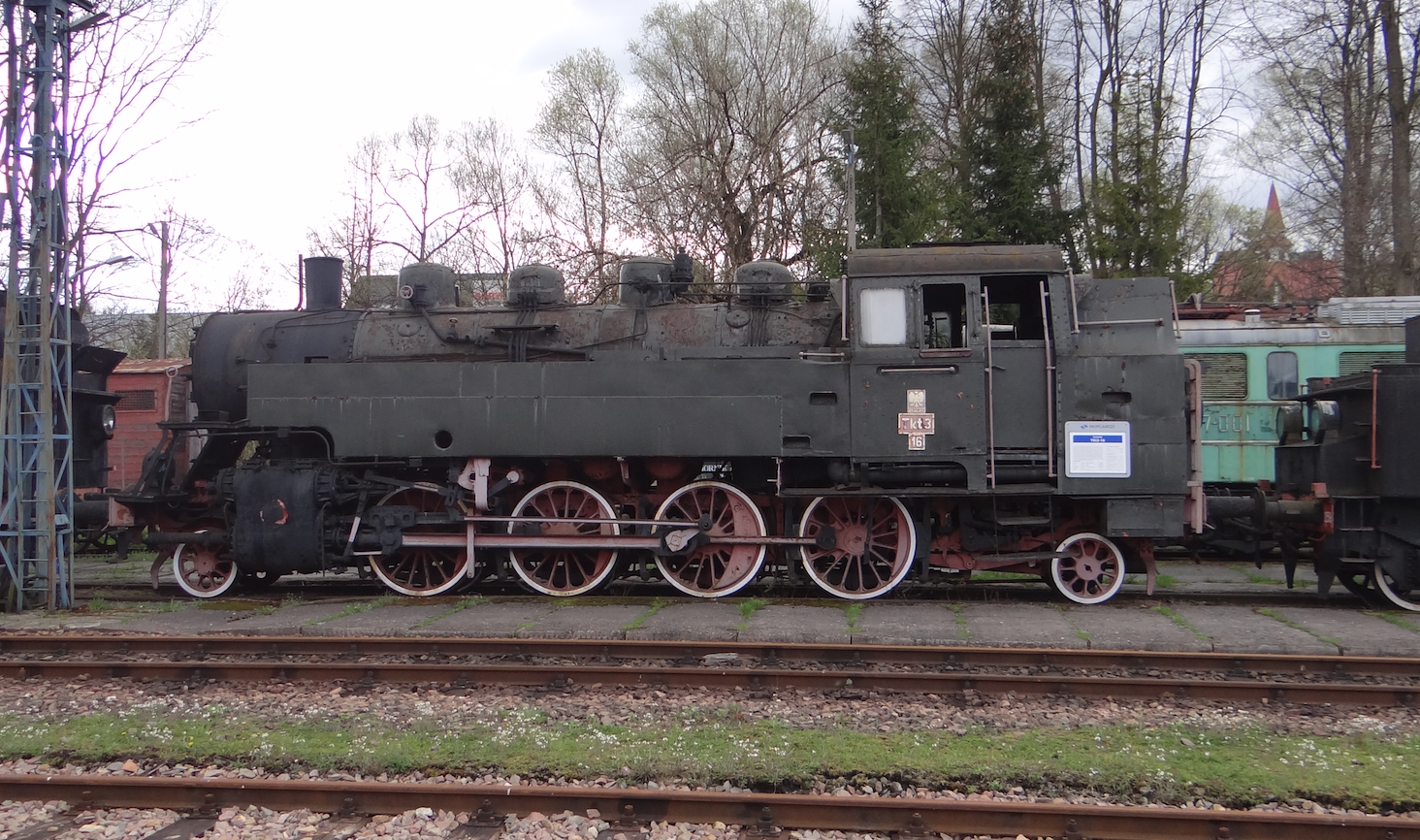Wałcz 2021-12-15
Former LK No. 416 Wałcz Raduń – Wierzchowo Pomorskie.
In 1898, Wałcz was connected with Wierzchowo Pomorskie and then with Złocieniec, in the north-west direction. In Poland, the trail received No. 416. The trail was about 38 km long.
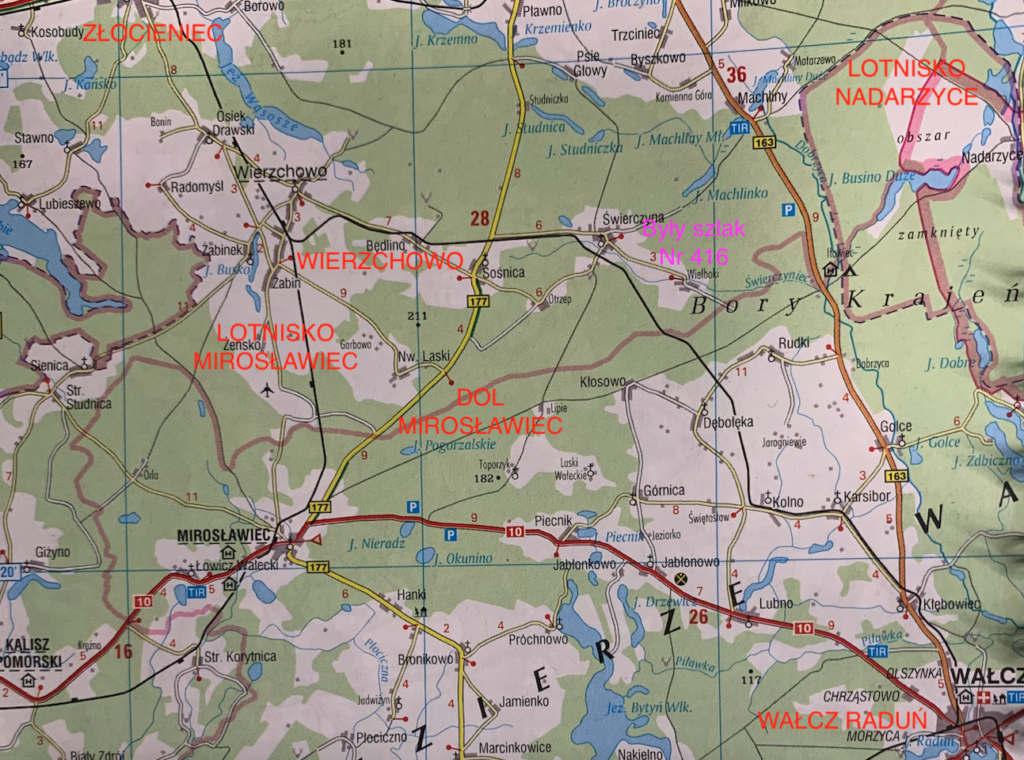
Railway line No. 416 Wałcz Raduń – Wierzchowo Pomorskie is a railway route that no longer exists. The route served as a local connection. It was built in Prussian times, in two stages. On December 3, 1898, the Wałcz Raduń – Rudki section was opened, and on November 10, 1900, the Rudki – Wierzchowo Pomorskie section. The Kalisz Pomorski – Mirosławiec – Wierzchowo Pomorskie – Złocieniec route; it already existed, so trains from the Wałcz Raduń station could go directly to Złocieniec.
The owner of the route was Lenz & Co GmbH. At the outbreak of World War II, in December 1939, the line was subordinated to the state-owned company Landesbahndirektion Pommern, the German directorate of national railways – Pomerania. The company managed standard gauge and narrow gauge railways from Szczecin to Słupsk. It was these railways that were the victims of the greatest Soviet plunder in the period 1945-1946. In 1946, already under Polish rule, freight and passenger traffic was restored on the Wałcz Raduń – Wierzchowo Pomorskie route.
In the 1950s and 1960s, the route was serviced by steam locomotives. Tkt3 locomotives were very often used there. The TKt3 locomotive is a tank locomotive of German construction (standardized BR86 type), derived from the BR24 and BR64 steam locomotives, produced in the period 1927-1933, by various Germanic plants, and from 1939 also in occupied countries, including in the Hipolit Cegielski plant in Poznań. The design of the locomotive with a low axle load, only 17,000 kg, was intended to service trains on secondary lines, with weaker tracks and small distances between stations. The advantage of the locomotive is the same running speed, both forward and backward, which, in the absence of turntables at small terminal stations, facilitates operation.
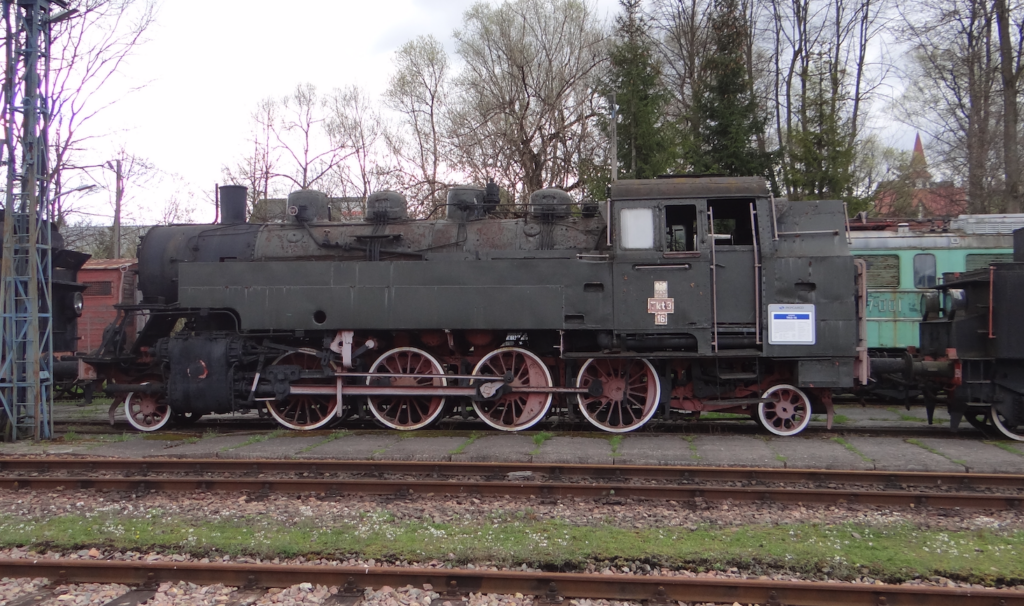
The locomotive was coupled with passenger cars of the “sidecar” type or newer walk-through cars with covered platforms. The locomotive was continuous with two or three cars. Steam locomotives on route No. 416 were used for a very long time. In the 1980s, diesel locomotives of the SM42 type and cars of the “Ryflak” and “Bonanza” types were used.
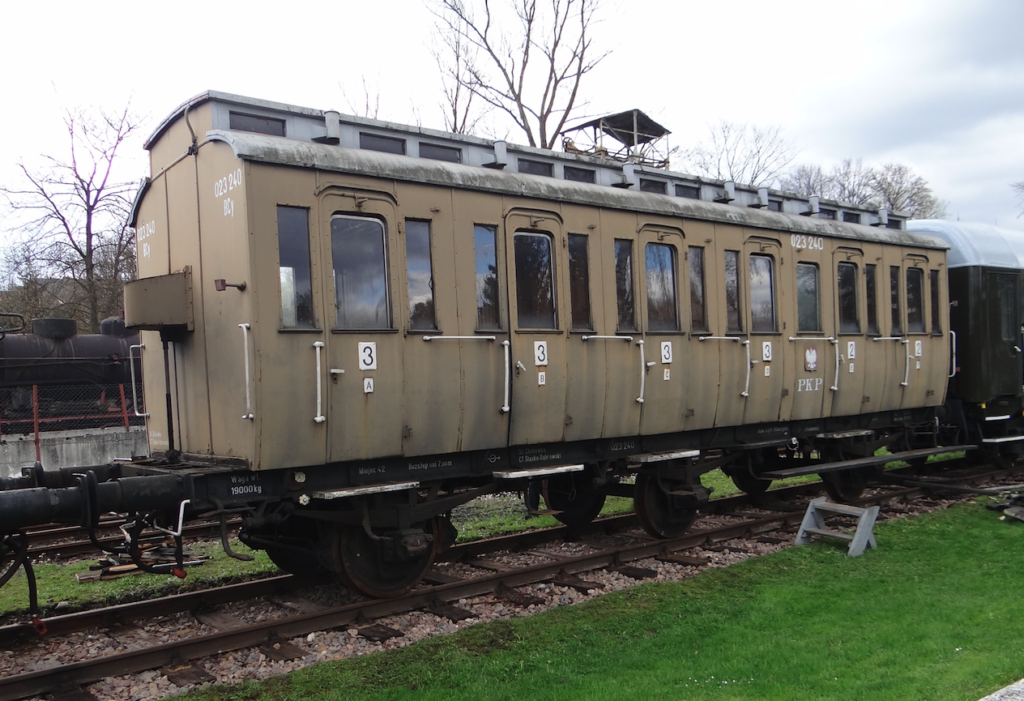
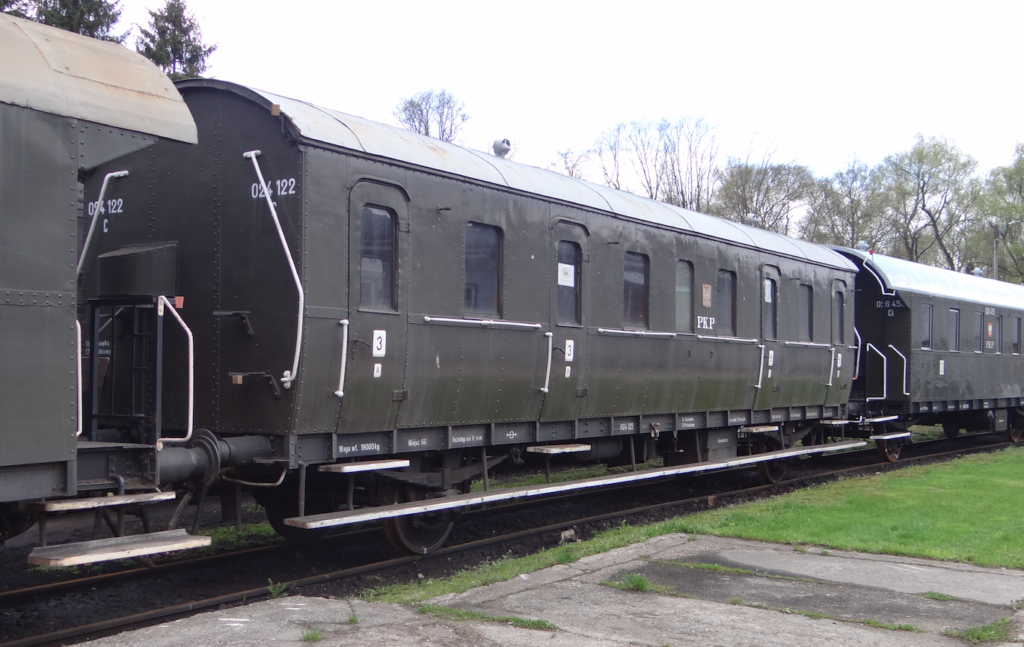
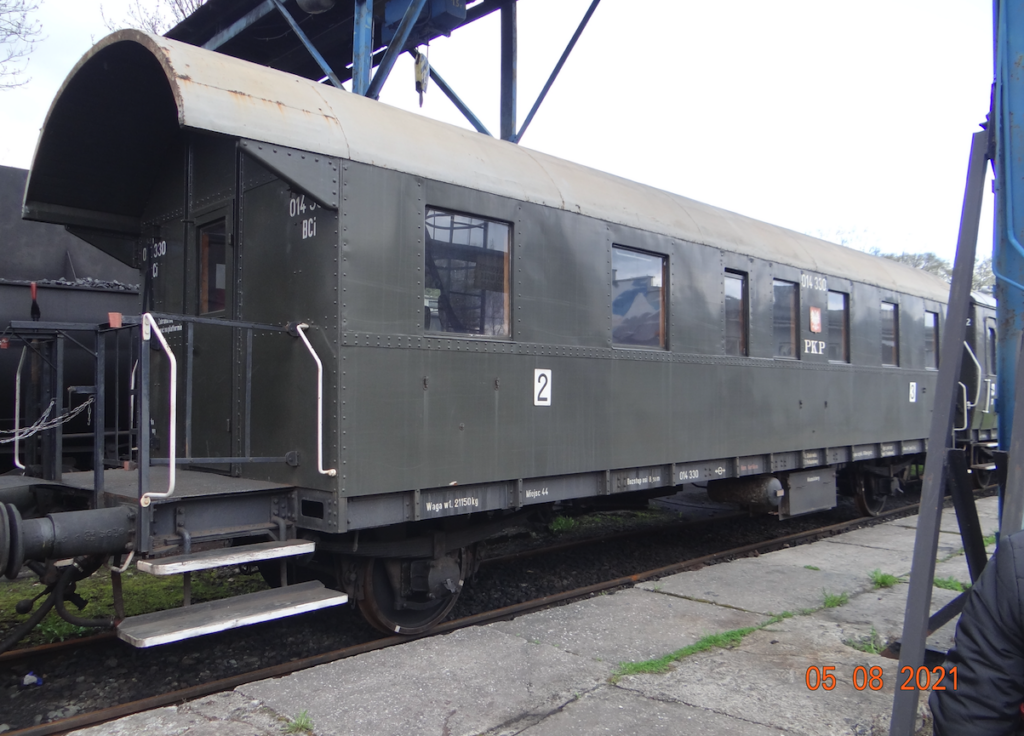
Line No. 416 was built at the lowest cost. It was routed along motor roads, without the need to build viaducts. All crossings were at the same level and mostly not equipped with barriers (barriers). There were barriers only at the crossing in Wałcz, along Nowomiejska Street, and in Wierzchowo Pomorskie, along Długa and Szkolna Streets. All stops had low platforms and small warehouses. The line was single-track and was never electrified. There was a passing loop in Świerczyna Drawska. There were no semaphores on the route, and the ride took place after telephone arrangements and according to the timetable. Shape semaphores are only at the Wałcz Raduń and Wierzchowo Pomorskie stations. Road and rail crossings had a wooden surface. In the 1970s, the wooden surface was replaced with prefabricated concrete slabs. Some of these crossings still exist today (2021).
After leaving Wałcz, the trail led through numerous areas of agricultural fields, and from the town of Rudki, the trail led mainly through forest areas. The height difference in the terrain was small, so the trains moved smoothly. However, there were numerous curves that did not allow for the development of maximum design speeds. Unguarded railway crossings and irresponsible road users were a major obstacle for drivers (mechanics).
The line was maintained in good condition. Wooden, damaged sleepers were replaced with new ones, and in the 1980s even with concrete sleepers on a significant length, between Świerczyna Drawska and Bęblino.
Passenger traffic on route No. 416 was suspended in 1992. Freight traffic was carried out until 1995. The dismantling of the line began in 2010, in the city of Wałcz, on a length of approximately 0.56 km. The tracks were dismantled from the first switch at the Wałcz Raduń station to the city limits. These areas were incorporated into private plots. In 2014, the dismantling of the remaining route began. The main dismantling works were carried out in 2016. At that time, the track was already very overgrown with weeds, and self-seeded trees were already growing in the forest areas. The dismantling works were completed in November 2016. A fragment of the track that is part of the Wierzchowo Pomorskie railway station remained, which is treated as a siding. There were plans to build a bicycle path along the former railway.
Railway stops on route No. 416: Wałcz Raduń 0 km, 113 m above sea level, Wałcz Paszutil 2.77 km, 111 m above sea level, Kłębowiec 5.78 km, 111 m above sea level, Karsibór 10.07 km, 120 m above sea level, Kolno Wałeckie 12.81 km, 126 m above sea level, Rudki 18.04 km, 136 m above sea level, Kłosowo 19.25 km, 133 m above sea level, Wielboki 22.43 km, 137 m above sea level, Świerczyna Drawska 24.71 km, 138 m above sea level, Sośnica Pomorska 28.99 km, 141 m above sea level, Bęblino 31.56 km, 147 m above sea level, Wierzchowo Pomorskie 37.87 km, 141 m above sea level.
Written by Karol Placha Hetman
